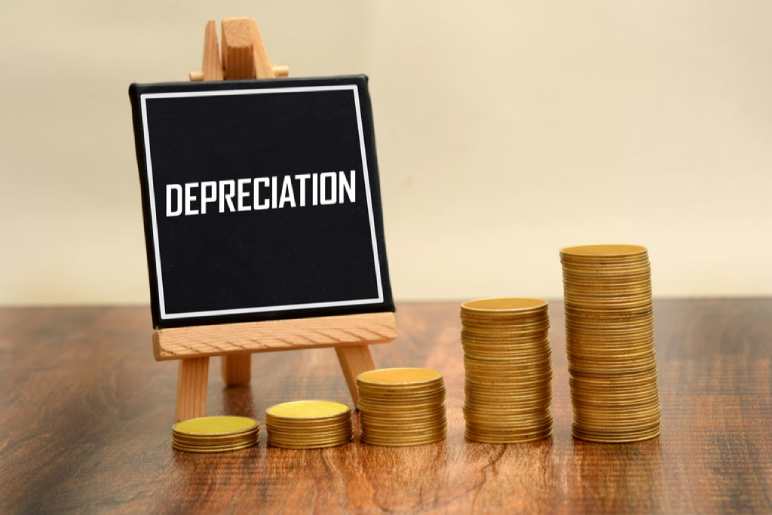
Understanding the depreciation of repairs is fundamental to accurate financial reporting. Whether you’re a small business owner or a large corporation, knowing how to properly account for repair costs can significantly impact your bottom line. This guide dives deep into the intricacies of repair depreciation, highlighting common mistakes and offering practical solutions. We’ll explore various methods, consider tax implications, and ultimately empower you to make informed financial decisions. This article will be structured to first cover the fundamentals of depreciation and how it impacts repairs. We’ll then delve into specific scenarios and explore varied methods for handling such expenses before concluding with key takeaways.
Understanding the Fundamentals of Depreciation
Defining Depreciation
Depreciation is the gradual decrease in the value of an asset over time due to wear and tear, obsolescence, or other factors. This idea is crucial in accounting to reflect the true economic cost of using an asset throughout its useful life. Not all expenses are depreciable, though! Repairs, in contrast to improvements, do not boost the asset’s future economic benefits. Therefore, they are expensed in the period they’re incurred.
How Depreciation Relates to Repairs
Repairs, unlike capital improvements, don’t extend the asset’s useful life or significantly enhance its future benefits. Consequently, repair costs are generally expensed immediately. However, whether a cost is considered a repair or an improvement can sometimes be ambiguous, requiring careful judgment. This is particularly pertinent for larger repairs. This ambiguity is what causes confusion regarding repair depreciation.
Examples of Repairs
Examples of repairs include routine maintenance, replacing worn-out parts, or fixing damages. Consider repainting a building or fixing a broken machine. If these actions don’t extend the asset’s useful life beyond its original projected life or add substantial future benefits, they’re typically treated as expenses.
Related Post : How Much Does It Cost To Repair Hail Damage
determineing Repair vs. Capital Improvement
The Crucial Distinction
Distinguishing between repairs and capital improvements is paramount for accurate depreciation accounting. A capital improvement boosts an asset’s useful life or significantly enhances its future benefits, whereas a repair merely restores the asset to its original condition or maintains its functional capabilities. For example, replacing a worn-out component in a machine or repainting a building. A crucial step is recognizing what constitutes significant enhancement.
Practical Application
Consider a scenario where a company replaces the roof of a building. If the roof replacement extends the building’s useful life substantially or adds substantial value, it should be capitalized as a capital improvement. Conversely, if the roof replacement merely restores the building to its original condition, it’s expensed as a repair. Careful consideration of factors like the asset’s original condition and the extent of the work is essential for accurate classification.
Decision-Making Considerations
Consider the asset’s useful life before making decisions regarding whether a repair is necessary. If the repair significantly affects the useful life of the asset, then it should be considered a capital improvement. The long-term implications of each choice are critical in accurate financial management.
Depreciation Methods and Their Application
Straight-Line Method
The straight-line method is a simple depreciation method where the same amount of depreciation is recognized each year over the asset’s useful life. This method is commonly used for its simplicity and ease of application. It works well for assets with a relatively uniform decline in value over time.
Accelerated Depreciation Methods
Accelerated depreciation methods, such as the double-declining balance method, recognize more depreciation in the early years of an asset’s life and less in later years. This method is often used for assets that experience a quicker decline in value in their early stages. However, proper use requires careful evaluation of the asset’s specific circumstances.
Choosing the Right Method
The optimal method for calculating depreciation depends on the asset and the specific circumstances of the business. Consider the asset’s expected rate of decline and its impact on profitability over time. The straight-line method may be appropriate for simple assets with relatively uniform decline in value, while accelerated methods might better suit assets with rapid initial depreciation.
Tax Implications of Repair Depreciation
Understanding Tax Regulations
Understanding the tax implications of repair depreciation is crucial for optimal tax planning. Generally, repairs are expensed in the current period, reducing taxable income. However, tax regulations can vary, so it’s advisable to consult with a tax professional to ensure compliance. Be mindful of tax laws and regulations when making accounting decisions regarding depreciation.
Specific Tax Considerations
Consult with qualified accounting and tax professionals for details on how depreciation of repairs fits into your specific tax obligations and business structure. Tax implications can differ based on factors such as location, industry, and specific regulations. Carefully assess tax consequences for long-term financial planning.
Consulting Professionals
Seeking professional guidance from accounting and tax advisors is essential to navigate the intricate tax implications. Their expertise will help you ensure accurate financial reporting and adherence to regulations.
Case Studies: Handling Repair Expenses
Case Study 1
Consider a company that replaces a major component in a machine that significantly extends the asset’s useful life. This would be classified as a capital improvement, rather than a repair, and its cost would be added to the asset’s value for depreciation purposes, affecting future tax liabilities.
Case Study 2
In contrast, consider a company that performs routine maintenance on various machines by replacing worn-out parts. These actions are considered repairs, expensed immediately, and do not affect the asset’s recorded value for depreciation.
Common Mistakes
One common mistake is to confuse routine maintenance with capital improvements. Ensuring accurate categorization is crucial for accurate financial reporting and compliance.
In conclusion, understanding the depreciation of repairs is crucial for accurate financial reporting and sound business decisions. By adhering to accounting standards and considering the specific circumstances of each repair, businesses can ensure they’re accurately reflecting the true economic cost of maintenance. Consult with a qualified accountant for personalized advice on handling repair depreciation in your specific situation. Need help analyzing your business finances? Contact us today for a complimentary consultation!